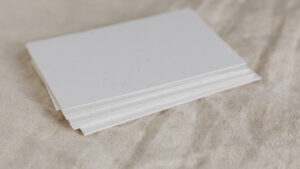Last Updated on August 24, 2023 by Packoi Team
According to statistics, 44% of consumers end up visiting a website after receiving printed marketing materials like mailers, catalogs, and magazines. Not only that, it’s revealed that more people respond to direct mail compared to digital versions.
But here’s the problem for some businesses: What if you don’t have enough money to print catalogs?
Don’t worry. There are ways to save money and still get high-quality catalogs that can help your business grow.
In this article, you’ll get cost-effective tips to print the catalog that can boost your sales and strengthen your brand’s reputation.
9 Cost-Efficient Catalog Printing Design Strategies
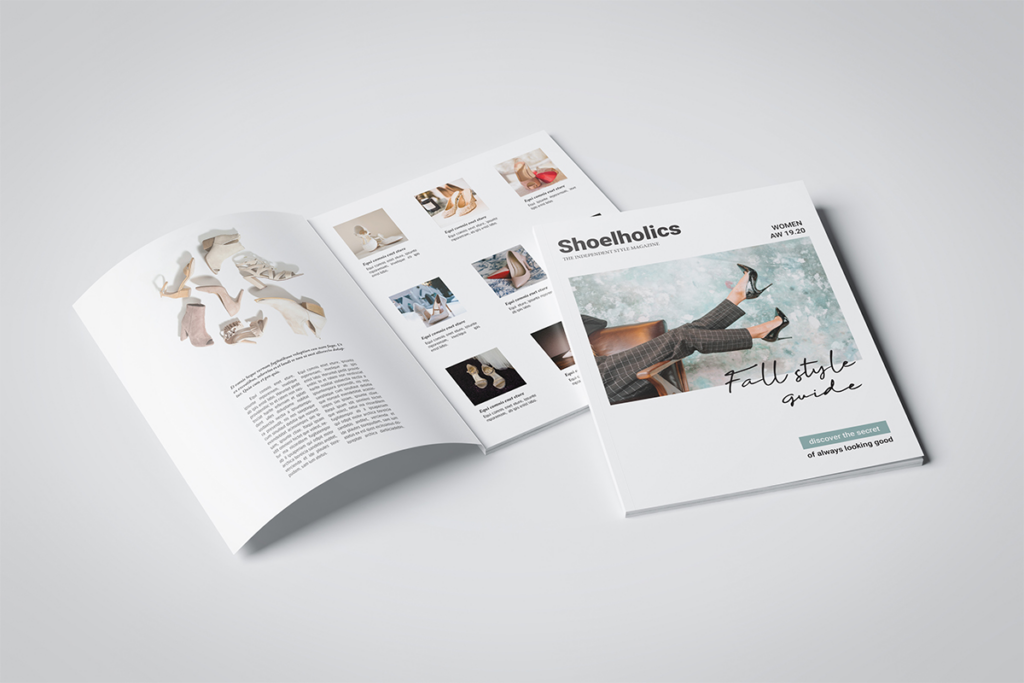
Lowering your catalog printing costs is possible as long as you approach it with a plan. You can’t just choose the most budget-friendly option and be done with it. This won’t be like book printing, where everything depends on the content. Your catalog is primarily used to promote your business.
That means you need to pick the right elements for the catalog and choose a design strategy that’ll impress your target readers without going beyond your budget.
Here are the key factors that’ll help you choose the right catalog design strategy that’ll give you the best value for your money.
Clear and Minimal Layout
There are many benefits to choosing a minimalistic design for your catalog layout. For one, it avoids overwhelming readers with too much information. It also allows you to highlight the right elements in the catalog.
But most of all, it’s a very effective way to save money.
This means leaving white spaces to keep the layout looking clean. This simplicity will lower the use of ink and keep the visuals of your catalog clear, clean, and simple.
Stick to Your Brand Design
If you already have a brand design with colors, font options, etc., use this as the foundation of your catalog design. There are two reasons why this is a good idea.
First, it’ll help you create a catalog that fits your brand identity. When people see the brand elements, they’ll know that they’re associated with your business. This increases brand recognition and allows people to establish familiarity with you.
Second, this approach will minimize design adjustments while printing catalogs. You won’t need to hire a professional designer because you have your brand guidelines to help you come up with a design that your target market is already familiar with.
Optimize Image Resolution and Format
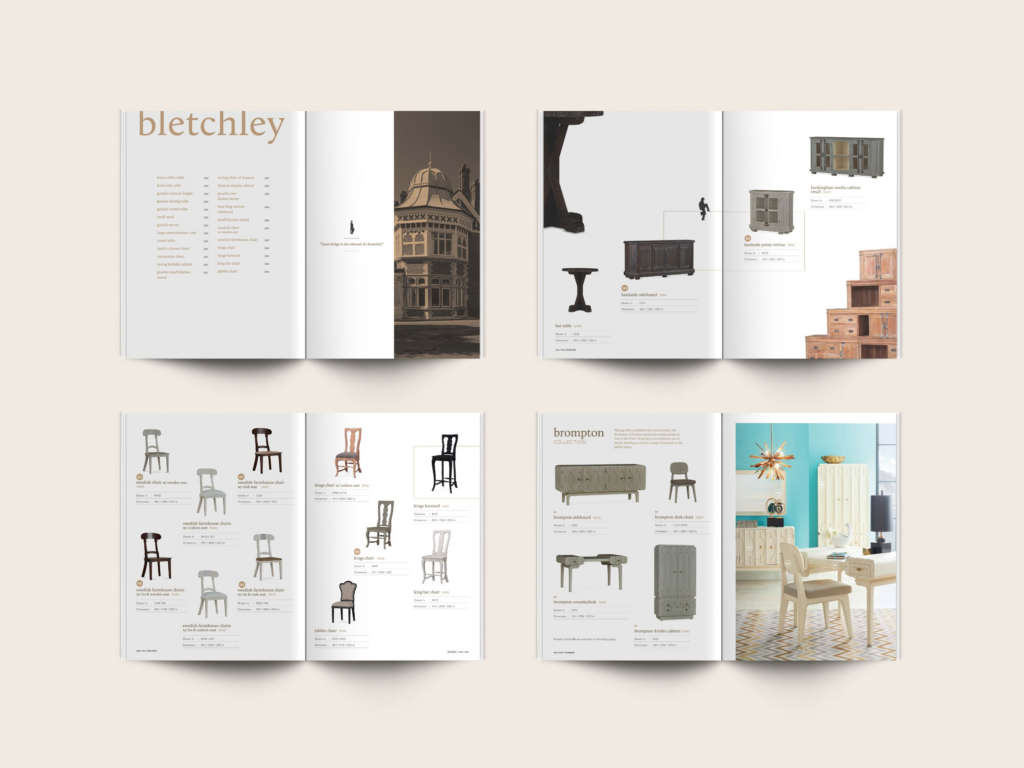
Using high-quality images is typical when it comes to catalog designs. But if you’re working on a tight budget, this might not be an option for you. It’ll be harder to save money because large images could inflate the cost of printing your catalog.
It’s better to choose the right resolution and format so the images in your catalog won’t cost you more. If possible, you should also choose to group the images so you can lower the cost of printing some pages without images.
Be Concise with the Page Count.
Having multiple pages is common in catalogs. But you can lower printing costs if you keep your page count down. This means you need to remove unnecessary blank pages. While this is a great idea to give the reader’s eyes time to rest, putting a lot of white space would have the same effect, so the blank pages aren’t necessary.
Choose only the content that you want to highlight in your catalog. If it requires a lengthy explanation, provide a link or QR code to your website. This way, readers will have the option to get the complete information elsewhere without cramming everything into the catalog.
Use Templates
This is a great way to save money if you want to skip using a professional designer. There are many online templates for catalogs that you can download. Find the right template that suits the particular project that you’re designing.
These online templates usually have drag-and-drop features that make them easy to use. You can upload images and content on your own. It’s faster and more efficient, saving you time as well.
Check with your chosen printer to see if they have templates that you can use. This will guarantee that the file you’ll come up with is compatible with the machines on the printer.
Pick Standard Sizes
Printing companies usually have stock paper in their inventory. These follow the standard size of 8.5 x 11 inches. Some have 8.5 x 14 inches and 11 x 17 inches, too.
If you choose the standard page size, this can lower the catalog printing cost. Having bigger page sizes would mean the printer would use more press sheets. This will result in more paper waste and higher costs.
Talk to your printer and ask about their stock paper. Check if you can design your catalog to fit the paper sizes that they have in their inventory. This will save you both time and money.
Use Minimal Colors and Ink
Color printing will also play a role in helping you save money. Full-color catalogs may look better, but they can be very costly to print. The use of excessive ink for printing will put a dent in your budget.
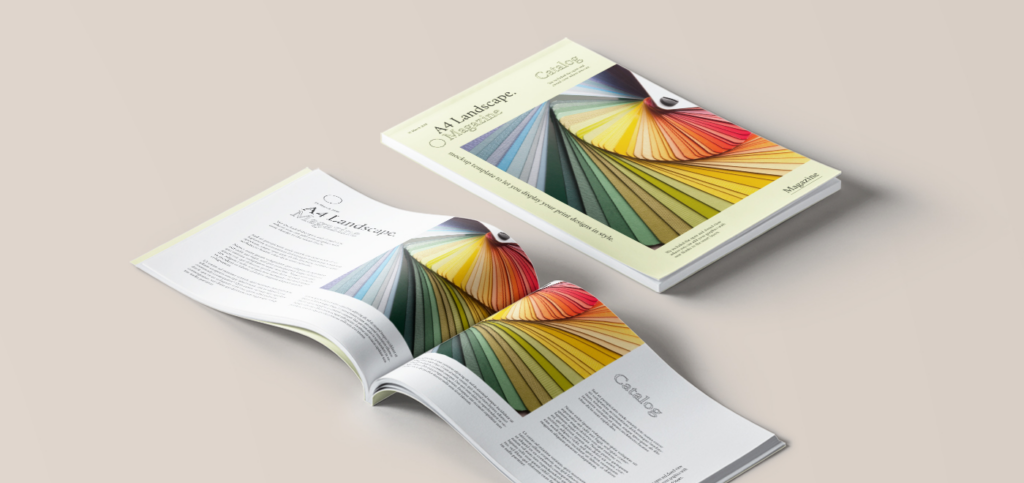
If you want to keep costs down, you need to choose colored photos strategically to minimize ink usage. There might be photos that you can print in grayscale without affecting their visual impact.
You can also consider using eco-friendly fonts. This means they use thinner yet very clear lines. The message will look cleaner, and it won’t cost you more.
Tone Down Special Effects
The more you use special effects, the more your printing costs will increase. This is why you should think twice about using foil stamping or embossed printing techniques. These will just add to your expenses unnecessarily.
Sometimes, being simple about your design is more effective at driving home your message to readers. There are many ways to keep your catalog designs attractive without using too many special effects.
Check for Errors
This is an obvious way to help you save money while printing your catalog. Make sure that you double-check the content and images of the catalog before you send them for a print run.
Proofreading will avoid costly errors and paper waste. You should also arrange with the printing company to get a mockup of the catalog before mass production. This will allow you to check the colors, content, layout, and other visual elements for errors.
2 Printing Techniques to Save Money on Printing Costs
The printing method will also play a crucial role in allowing you to save money printing catalogs. There are several options for you to choose from. It’s important to check with your printer about the options that you have. Talk about how you want your catalog to look and the quantity you’ll order.
To help you with your options, here are the two common printing techniques that you can choose from.
Short Runs: Use Digital Printing
To understand how digital printing works, you need to think of a photocopier machine. It’s not like offset printing, which uses plates to print your catalog.
It only uses a computer to initiate the process and an ink powder to put it on paper. It produces less waste because the color balance can be regulated on the screen before the printing process starts.
This is ideal for short runs because there’s no need to set up fees. It also prints the catalog a lot faster. But the downside is, that if you use it to print larger quantities, you’ll end up paying more per piece compared to its alternative.
Large Runs: Use Offset Printing
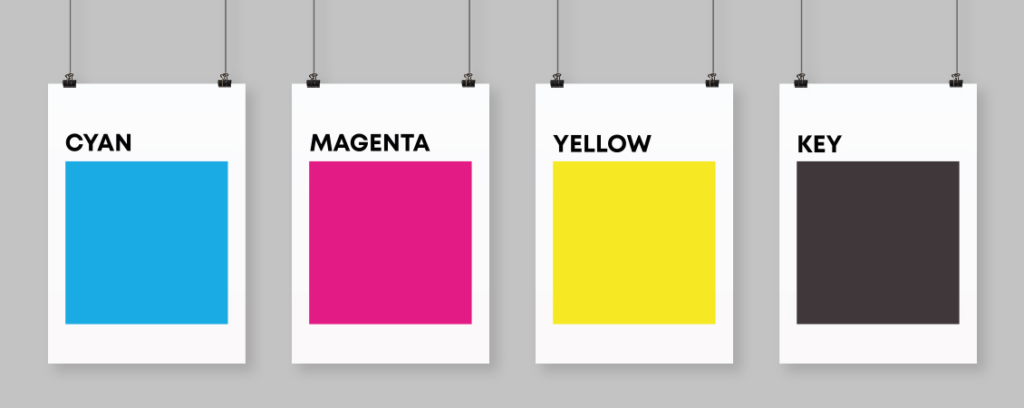
This catalog printing method is more complex than digital printing. It’s like a modern printing press that uses plates. You’ll need four key plates as a minimum—one each for CMYK (cyan, magenta, yellow, and key or black). These are pressed on the same paper to produce the image output for the catalog.
The thing about offset printing is that it will cost you to set up these plates. You also need to add the paper used for the color tests when the plates are being set up.
But once they are done, the actual printing process won’t be as costly as it gets with digital printing. The set-up or start-up cost is usually divided by the number of copies to be printed. This is why, if you need a lot of catalogs printed, you’ll save more money if you use offset printing.
How to Choose Budget-Friendly Catalog Paper
There are ways to save money by choosing the right type of paper when you print your catalog. If you consider the features that differentiate one paper from the other, you’ll figure out which one to use.
If you have any experience printing books, you will find that the process and considerations when choosing paper for a book are usually the same as those for a catalog. But there is one thing you must remember.
A catalog is meant to impress and market to your target audience. That means they have to be impressed by what you put in the catalog. Don’t sacrifice the visual quality of your catalog just because you want to save money. This is an investment that you can get incredible returns from.
So when you’re choosing a budget-friendly paper, make sure you still consider the output and not just the price.
The Weight and Thickness
The lighter and thinner paper will cost less and won’t add a lot to your printing costs. But you have to consider what type of output you want to have for your catalog. After all, you still want to use your catalog to impress your market.

If you want to showcase your products in the catalog, you might need thicker paper for that. You also want to use paper that won’t tear easily when customers turn the pages several times.
Think about a compromise on this. Use a mid-range paperweight. That way, it won’t cost a lot, and it’ll still be durable.
The Coating
Catalogs can use coated or uncoated paper. Coated paper has a smoother look that’ll give you more vibrant images. Uncoated paper has a more natural texture and will make your catalog look more rustic.
If you want to save costs, consider uncoated paper, especially if you have no plans to put too many images in your catalog. Maybe you can use coated papers for the cover and uncoated ones for the inner pages.
The Opacity
This refers to the transparency of the paper. The higher the opacity, the less chance there is that the text or images will bleed through to the other side. That means the opacity will depend on the content that you’ll put on the catalog.
If you don’t need heavy text or images, you can save on printing costs if you have just enough opacity on your paper. Test the paper so you can see the effect. More than saving costs, your catalog should still look professional and be readable.
The Finish
Among the options for the paper finish are matte, gloss, and satin. Gloss is the best option if you want your images to appear vivid. Matte, on the other hand, will leave your catalog looking more sophisticated. Satin is a combination of both.

To know what the economical option is, you have to look at your content first. You want to end up with the best-looking print for your catalog, so it’ll be memorable enough for the readers.
Compare Economical Binding Options for Your Printed Catalog
Part of the catalog printing process is binding all the pages together. Commercial printers offer a lot of options when it comes to binding catalogs. They’re similar to the book printing options.
Understanding each of the binding methods will help you figure out how to save money in the process. Here are the 3 methods that you can choose from if you want to keep costs low for your catalog.
For Fewer Pages: Saddle-Stitch Binding
This binding method is ideal if your catalog only has a few pages. It involves folding the pages in half after the catalog printing is done. Then, the pages will be stapled together along the spine to bind them together.
This is a cost-effective way to bind thin catalogs and gives them a clean and professional look.
For Higher Page Counts: Perfect Binding
In case your catalog has too many pages, skip the saddle stitch and opt for the perfect binding method. This option groups pages together to bind using adhesive.
This may be more expensive, but it’s effective for binding thicker catalogs. It will make the catalog look more like a book. It’ll give a high-quality finish to the catalog and impress the readers – making the investment worthwhile.
For Convenience: Wire-O Binding
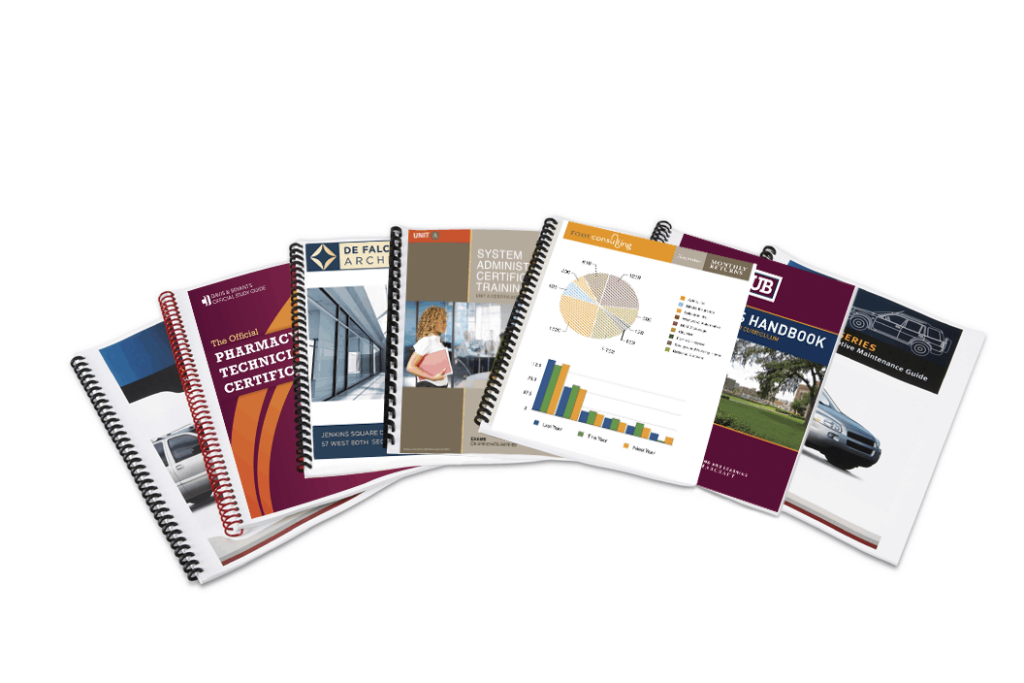
Think about how the target audience will use the catalog. If you want to give them the convenience of being able to lay the catalog flat when opened, this is a great option to consider. In this binding option, holes are punched at the edge of the page so O-shaped wires can bind them together. This allows the pages to remain open when laid flat on a surface.
Save Money on Your Catalog Printing Cost. Packoi Printing Is Willing to Discuss the Best Options with You.
Printing a high-quality and visually appealing catalog doesn’t have to be an expensive process. As long as you know what your options are, it’ll be easier to find the right way to save money. Choose the right design, layout, paper, printing technique, and binding method. You can create the type of catalog that best represents your brand.
If you need help putting together a budget-friendly catalog, get in touch with Packoi Printing. We can help you meet your catalog requirements without putting a lot of strain on your budget.
Give us a call so we can discuss it further. We’ll get back to you with a quote in no time.




